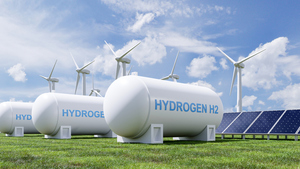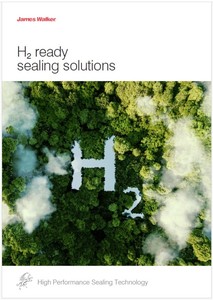

|
Edward Lowton
Editor |


|
| Home> | Energy Management | >Sustainable energy | >Focus on sealing industrial gases |
Focus on sealing industrial gases
03 February 2025
THE GASES that make up the very air we breathe are essential for sustaining life on our planet, but in industrial applications they provide many sealing challenges in their production, storage and transport.

As the world grapples with the pressing need to reduce carbon emissions and combat climate change, Carbon Capture, Utilisation, and Storage (CCUS) and the energy transition to clean fuels have emerged as crucial technologies.
The development of reliable sealing solutions for CO2 handling equipment, such as valves, is paramount and as the demand for CCUS technology continues to grow, the need for effective and reliable sealing solutions in supercritical CO2 (sCO2) applications has also grown in importance.
Although globally recognised testing standards don’t currently exist for assessing and validating products for the sealing of sCO2, the production, handling and storage systems for these media are still subject to environmental regulations. These regulations, which vary by region, often impose limits on greenhouse gas emissions and mandate leak detection and repair (LDAR) programs with the risk of financial penalties or enforced shutdowns for non-compliance.
Taking the lead in verifying product performance, James Walker has adapted existing fugitive emissions tests for valves to test the performance of compression packing with CO2 through its supercritical phase.
Initial results have highlighted Supagraf 100FXi CS, one of the company’s latest fugitive emissions packing products, which has now been verified to ISO 15848 upto CO3 endurance class with tightness class “A”, no requirement for stem seal adjustment and a maximum leakage rate of just 40 ppmV.
'Handling' liquid and gaseous forms of hydrogen also presents a unique set of technical challenges.
Given hydrogen has a lower ignition temperature/energy and requires a lower oxygen content to ignite when compared to natural gas, any safety concerns are clearly well-grounded. Hydrogen also has a higher flame speed and burns at higher temperatures in air. This combination of properties has the potential to present significant safety risks and as a result, appropriate safety management is needed to mitigate any uncontrolled releases, leaks or even explosions.
Once again, with no industry standards or approval regimes in place, James Walker has taken the initiative and is undertaking a programme of development, testing and validation of products and materials for sealing applications in hydrogen service.
This test and validation programme has already identified a number of highly capable materials and products that are suitable for hydrogen service and the company is able to provide test results and reports to support product selection for original equipment manufacturers, as well as demonstrate operational benefits for end users. As the validation programme continues, the range of products and materials suitable for hydrogen service will be extended - progress can be followed on the James Walker website or by looking out for the ‘H2 Ready’ icon when using the company’s website or literature.
James Walker continues to undertake work to characterise the performance of its materials and products for service with oxygen, hydrogen and carbon dioxide to ensure customers can make selections based on verified test data, providing confidence when designing and specifying critical equipment such as valves.
More details of test programme successes are available from the James Walker website.
- App helps with hydraulic seal selection
- Technical sealing guide
- Gaskets don’t fail - bolted joint assemblies do
- Four accreditations in 18 months
- Elastomer guide
- Hydraulic seal selector
- Lead times cut
- Global gasket strategy
- Over the wall and into China
- New product for future-ready valve sealing performance



















